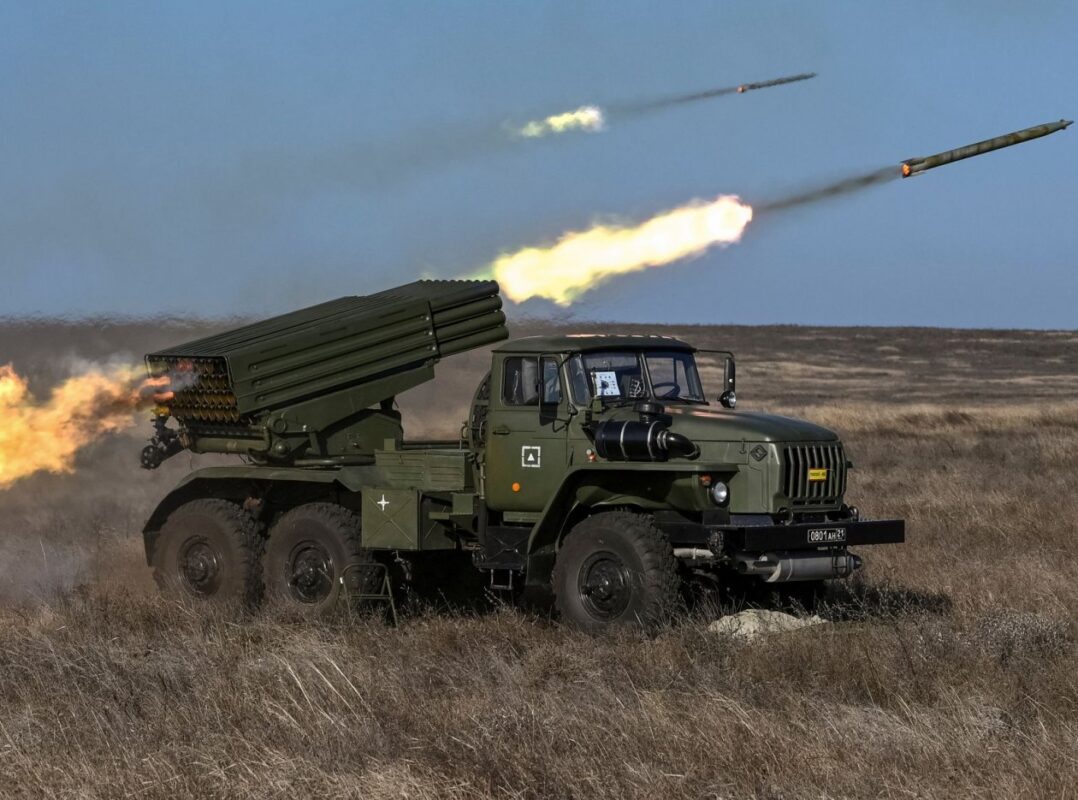4 mins read
A Fairy Tale of Ukraine? Why We Need to Revisit Our Narratives, with Dr. Ivan Katchanovski
#231:The Truth Behind Ukraine’s War: Dr. Ivan Katchanovski, Media and Myths. Open Minds with Christopher Balkaran
5 mins read

Russia and Ukraine are exchanging verbal barbs and mobilizing troops along either side of the contested Donbass region, but has the conflict really entered a new escalatory phase?
Clashes between Ukrainian troops and Russian-backed separatists in Donbass have intensified in recent weeks. Observers noted a sharp uptick in Ukraine’s regular shelling activity against separatist positions in Donetsk and Luhansk, with locals likewise reporting Ukrainian tank fire. A five-year-old child, Vladislav Shikhov, was killed by an explosion. The separatist self-proclaimed People’s Republic of Donetsk (DNR) blamed Ukraine’s military for Shikhov’s death, alleging that the explosive armament in question was dropped by a Ukrainian drone—however, Kiev disputes the DNR’s account.
Accusing one another of provocatory behavior, Russia and Ukraine are once again preparing for the possibility of direct conflict. Moscow has substantially upped its troops presence along the Donbass border, also moving trainloads of infantry fighting vehicles and 2S19 Msta-S howitzers to Crimea. “Muscle-flexing in the form of military exercises and possible provocations along the border is a traditional Russian affair,” said Ukraine’s President Volodymyr Zelensky earlier this week. President Joe Biden spoke with Zelensky on April 2, promising “the United States’ unwavering support for Ukraine’s sovereignty and territorial integrity in the face of Russia’s ongoing aggression in the Donbas and Crimea.”
Throughout the conflict, the Kremlin has recurrently stated that Russia is free to deploy its troops anywhere it wants within its territory. “The Kremlin has fears that a civil war could resume in Ukraine. And if a civil war, a full-scale military action, resumes near our borders that would threaten the Russian Federation’s security,” added Kremlin spokesman Dmitry Peskov. “The ongoing escalation of tensions is quite unprecedented.”
Reiterating comments made by Russian President Vladimir Putin in 2019, Kremlin official Dmitry Kozak invoked the 1995 Srebrenica massacre of over 8,000 Bosniak Muslims by Serbian soldiers and paramilitary units. Peskov and Kremlin-aligned commentators expounded on the Srebrenica analogy following Kozak’s remarks, noting the prevalence of nationalist movements in Ukraine, the alleged stoking of ethnic hatred against the people of Donetsk and Luhansk, and Kiev’s alleged lack of full control over the actions of Ukraine’s Armed Forces. The Ukrainian side “does not completely reject the concept of a military solution to its own problem in the south-east,” Peskov noted.
In a phone call with German Chancellor Angela Merkel, Putin again accused Ukraine of “provocative” military actions, dismissed Ukraine’s accusation that Russia’s military movements are a ploy to distract from international outrage over the jailing of Russian opposition figure Alexei Navalny, and described Russia’s military build-up as purely defensive in nature.
As tensions escalate over the Donbass, Ukraine continues to push for an expedited path to membership in the North Atlantic Treaty Organization (NATO). “NATO is the only way to end the war in Donbas. Ukraine’s MAP (Membership Action Plan) will be a real signal for Russia,” stated Zelensky following a recent conversation with NATO leadership. Russian Foreign Ministry spokeswoman Maria Zakharova warned that Ukraine’s NATO bid “wouldn’t only lead to a massive escalation of the situation in the southeast but could also entail irreversible consequences for the Ukrainian statehood.” While expressing general support for Ukraine’s sovereignty and territorial integrity, Washington has refused to back Ukraine’s NATO aspirations. Meanwhile, Germany and France have openly opposed a MAP for Ukraine.
Kiev, for its part, has stated on Friday that it will not launch a major military offensive into the Donbass region. “The liberation of the temporarily occupied territories by force will inevitably lead to the death of a large number of civilians and casualties among the military, which is unacceptable for Ukraine,” said Ruslan Khomchak, chief of the general staff of the Ukrainian Armed Forces, in a statement issued on Friday.
As the Donbass conflict continues to simmer with no clear end in sight, Putin faces mounting pressure from Russian politicians and prominent political commentators to adopt a more forceful policy line. The head of Russia’s Communist Party Gennady Zyuganov again urged the Kremlin to immediately extend recognition of the Donetsk and Lugansk People’s Republics, a move that would likely be accompanied by explicit Russian military incursions into the Donbass region. Russia Today (RT) editor-in-chief Margarita Simonyan made a similar appeal in late January: “Mother Russia, take Donbas home.” Citing the imminent threat of Ukraine’s accession to NATO, lawmaker Aleksandr Sherin framed the absorption of Donetsk and Lugansk as part of a pressing national security need to shore up Russia’s western borders against the west.
So, where can the war in Donbass go from here?
There is currently no indication that Russia is preparing to march its armed forces into the contested Donbass region—at least not preemptively. Doing so would amount to Russia’s open abrogation of the Minsk Peace accords, inviting further sanctions and potential military consequences. The Russian troop movements, then, can be interpreted as a deterrent measure; a signal of Moscow’s resolve to respond to a Ukrainian eastward offensive with overwhelming force. Kiev is bound by much the same logic. Zelensky’s government risks losing American and European support if it tries to retake its breakaway regions by force, inviting a repeat of the fateful strategic miscalculations leading up to the 2008 Russo-Georgian War.
Both Russia and Ukraine will be at a major political disadvantage if they make the first military move, creating a kind of uneasy balance with the status quo. Despite this latest round of escalation and the saber rattling accompanying it, there is nothing to suggest that this core geopolitical calculus has changed.